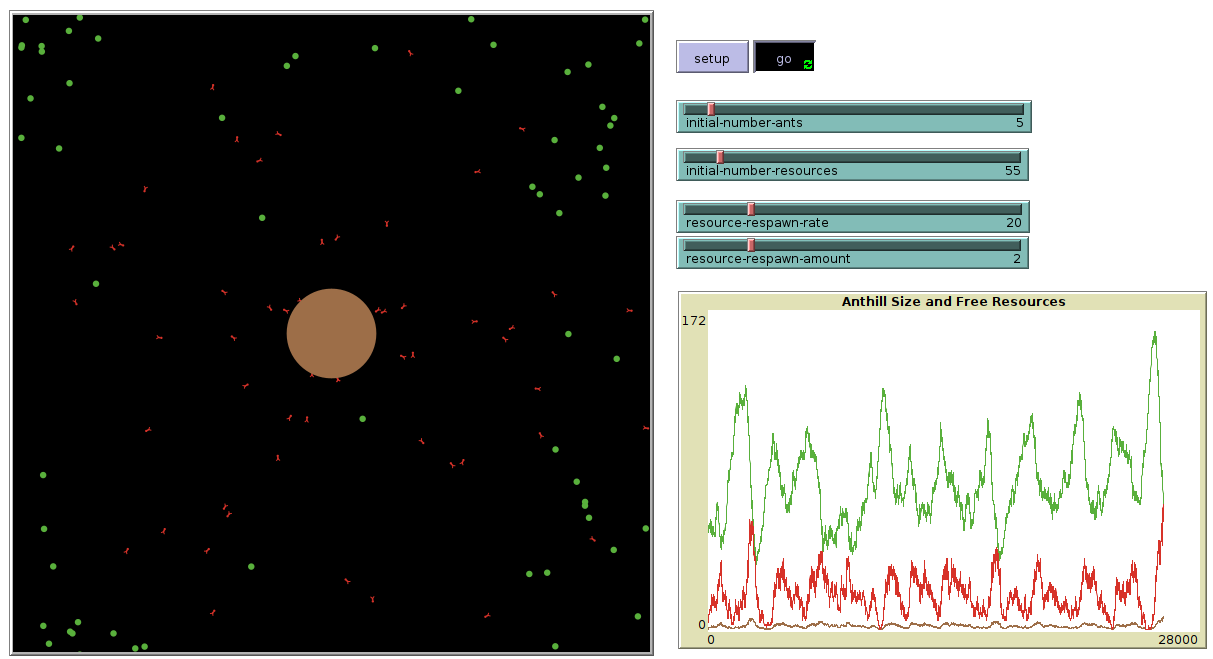Ant Colony
Contents
Problem definition
The simulation will model a colony of ants foraging for food. Each ant follows simple rules: searching for food, collecting it, returning to the nest, and reproducing. The goal is to analyze how the colony collectively locates and gathers food, demonstrating emergent behaviors from individual actions.
Method
Agent-Based Modeling in NetLogo
Model
The model uses agents and variables to follow the life of an ant colony.
Agents
Ants
- Move randomly within the environment.
- Search for food items.
- Collect food upon finding it.
- Carry the food.
- Return to the nest.
- Reproduce under certain conditions.
- Die randomly to simulate natural mortality.
Resources (Food)
- Disappear when collected by ants.
- Respawn at random intervals to maintain a dynamic environment.
Anthill
- Serve as the starting point for ants.
- Receive food from returning ants.
- Grow or shrink according to the colony size.
Variables
- initial-number-ants - initial number of ants in the colony.
- initial-number-resources - initial number of resources in the simulated universe.
- resource-respawn-rate - the probability that new resources will spawn.
- resource-respawn-amount - the maximal amount of resources that could spawn at once.
Results
The number of ants in the colony and the number of resources move in cycles. First, the ants collect resources and reproduce. The number of ants grows. They all go out in search of resources. They collect more resources. The number of ants grows and the number of resources diminishes. There are not enough resources for the ant population to keep growing or sustain its numbers. Therefore, the ant population starts shrinking. There are fewer ants to collect the resources. The resources keep spawning and the number of resources starts growing again. Ants start bringing back more resources and they reproduce more. The number of ants starts growing and the cycle begins again.
Conclusion
The initial number of ants as well as the initial number of resources do not seem to play much of a role. As far as the first ants can start collecting resources and reproducing it is much more important how many new resources will be spawning. Therefore, the location of the nest is what is the most important. It should be located somewhere, where resources 'spawn' regularly and/or in large quantities.
